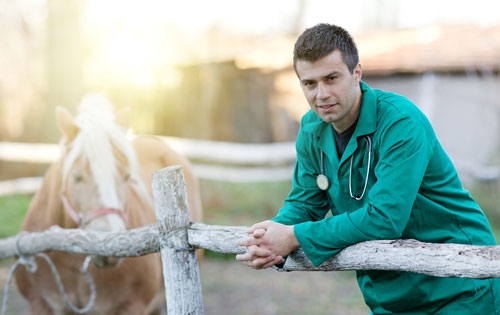Diederik Gelderman offers a framework for successful customer service in a veterinary practice.

A Veterinary Practice client’s journey begins when first hearing about you, followed by a number of moments of truth. In this article, Diederik Gelderman offers a framework for success.
Your client’s journey begins when first hearing about you (from a friend, from an ad, from ‘Facebook’ or even from the Yellow Pages) and then looking at your website or Googling you on their iPhone.
This initial tenuous ‘contact’ then results in a phone call or a visit.
This then leads to the initial visit and meeting the staff (Veterinarians, nurses, receptionists and technicians). Then come more visits, operations and so on and so forth.
The subsets or sub-steps are what occur within each visit. These include that way that the practice is presented (in the Yellow Pages, on the web as well as the appearance of the building and surrounds).
Also included is the appearance of the staff, the manner in which the staff speak, the manner in which the receptionist and Veterinarians relate to the client and the pet.
During this phase there is the ‘greeting’ process, the visit itself and then the departure and farewell.
Lastly of course is the follow up protocol.
Each individual business (practice) carries the client on a very different journey – both for the sub steps and for the journey itself.
Clients will choose different service providers because of the journey that is created by that business. Clients will be attracted or repelled by their ’emotional experience’.
This is neither good nor bad, it just ‘is’.
We need to attract (and bond) the clients that like the journey that we create (provide / have) in our business. We can’t be (nor do we want to be) everything to everyone and so we must create a ‘standout’ or ‘different’ experience to every other practice around.
This makes us no better, nor worse than others – just different.
And once we have ‘consolidated’ or ‘laid in stone’ the journey that we create, once we can consistently deliver a consistent customer service experience, then the clients that enjoy ‘that’ particular experience will flock to us.
These are the clients that love us as we love them. These are our ‘Gold’, our devotees and these are our raving fans.
All these are immutable facts.
The challenge becomes (because of the fact that the client journey is such a protracted affair – both each subset and the journey as a whole), how to recreate this ‘experience’ in a consistent and replicable manner.
Jan Carlzon the CEO of Scandinavian Airlines from 1981-1994, first raised the Moments Of Truth (MOT) concept in a failing airline back in the 1980s.
He used this concept to create a customer service experience in this failing airline company. He thought that by concentrating on a few key critical (and in fact manageable) areas of the client journey and that by creating a real ‘wow’ and ‘consistency’ in these areas, that the client’s ‘experience’ of the entire journey would be perceived as a much ‘grander’ experience.
In précis – his theory worked and within a very short time, Scandinavian became one of the foremost airlines in Europe.
How do we apply this concept to a Veterinary practice? The first point to remember is that we want to and need to create a consistency of experience. The aim is NOT to create a series of ‘parrots’ in our business, like the ‘Telstra’ and other similar companies – where you can hear them ‘leafing’ through their book of scripts as they talk to you. This is in fact counterproductive.
Let’s look at the process.
Step 1. Determine which areas are the key areas (let’s call them moments of truth – MOT) of your client’s journey. Which points are the key ones that make ‘THE’ difference?
So for a typical visit these MOT could be;
- Driving/arrival in car park
- Receptionist greeting
- Veterinary greeting
- Departure protocol
For a surgical case, an additional area could be;
Seeing/meeting/ picking up the pet
Meeting the Veterinarian who did the procedure
An additional area in both scenarios above could be;
Step 2. Paying the invoice. Create a skeleton protocol to create a consistency of experience within each MOT.
Step 3. Flesh the skeleton framework out with individuality.
A real life example
My hallucination is that a client that is waiting is severely challenged (by the practice) and that this is a key MOT. When we handle this well, the ‘experience’ can become (rather than a negative), a ‘WOW’ experience in the client’s mind. Done well, you bond the client even more strongly to the practice.
Below you will see a ‘standardised’ approach on to how to create a consistent customer service experience.
By the way, this standardization is achieved by creating the scripts and MOTs and then role playing these to achieve uniformity. Remember that Sir Laurence Olivier, Brad Pitt, Billy Connelly, Hugh Jackman or any other artist or performers that you care to think of, did NOT ‘get it right the first time’. All these people practiced and roll played (whatever they were doing), until they ‘got it right’.
MOT System for a ‘Waiting Client’
In the script below, the “xx” before ‘mins’ is the area where the practice determines exactly how long to wait before engaging in each of the steps.
This framework that is thus created by the Team, is fleshed out by the individuality allowed (in fact dictated) by the individual choice of phrase.
‘Waiting’ Client Protocol
Step 1. After xx mins approach the client. Thank them for their patience, advise them why the practice / Veterinarian is running late and roughly how long before the Veterinarian is ready to see them.
Step 2. After xx mins approach the client again, tell them again that you appreciate that their time is valuable and that you appreciate their continued patience. Let them know again roughly how long they can expect to wait. Say that you have a nice bun, biscuits, tea cake, etc and a nice cup of coffee, tea, cold drink and which would they like.
Step 3. After xx mins approach the client again. Indicate again how much that you appreciate their continued understanding and patience, you appreciate that their time is valuable and you really appreciate their continued support and how understanding and wonderful they are being. Advise them that at this stage ‘the waiting has gone long enough’ and as you can see it, they have three choices.
a) Continue to wait
b) Reschedule for another day
c) You’ll admit the pet for the day and the Veterinarian will examine him/her during a break. You will also make an appointment later in the day for the client to come back and discuss everything with the Veterinarian.
What not to say or do; “Sorry”
Leave the client waiting longer than detailed above
Chit chat with other Team members whilst the client is waiting
Other things you may wish to do;
Offer the client reading material
If they have a child present, give the child a colouring book and colouring pencils.
About the Author
 Diederik Gelderman BVSc, MVS graduated from the University of Sydney with First Class Honours in 1977. He established Greenhills Veterinary Hospital in 1990 and transformed it from a struggling one man practice into a burgeoning regional Veterinary Hospital servicing the wider Hunter Valley. This business won many Australian Veterinary as well as non-Veterinary (customer service) awards from 1996 till 2005. Dr. Gelderman is a certified NLP Master Practitioner and Veterinary coach.
Diederik Gelderman BVSc, MVS graduated from the University of Sydney with First Class Honours in 1977. He established Greenhills Veterinary Hospital in 1990 and transformed it from a struggling one man practice into a burgeoning regional Veterinary Hospital servicing the wider Hunter Valley. This business won many Australian Veterinary as well as non-Veterinary (customer service) awards from 1996 till 2005. Dr. Gelderman is a certified NLP Master Practitioner and Veterinary coach.



